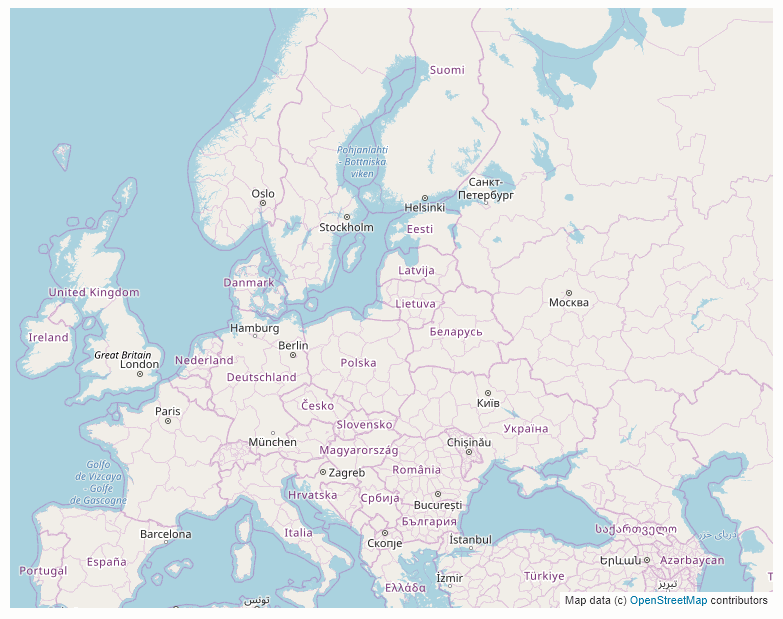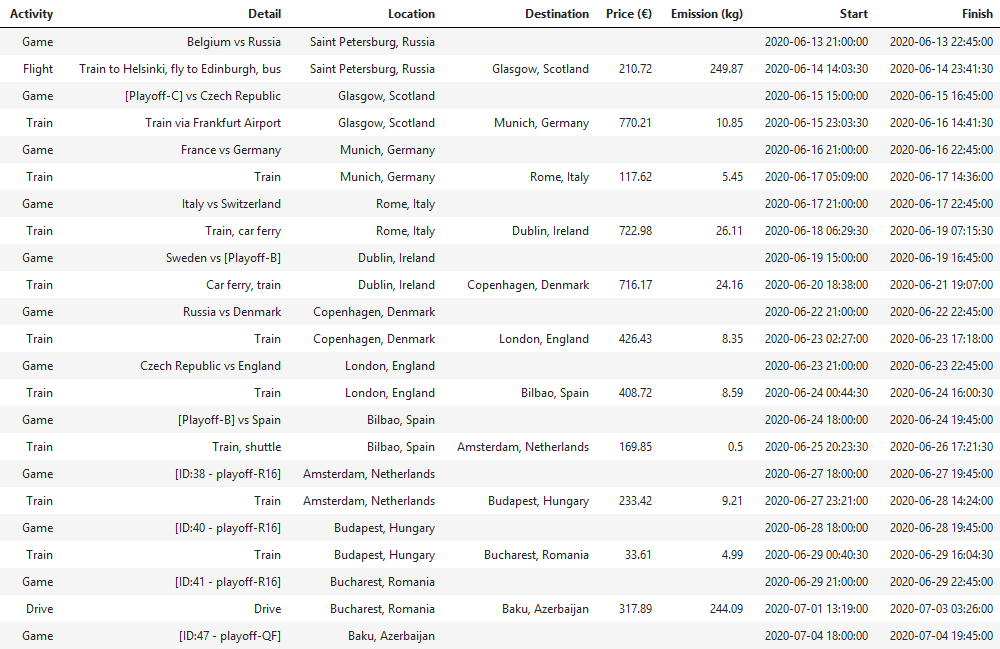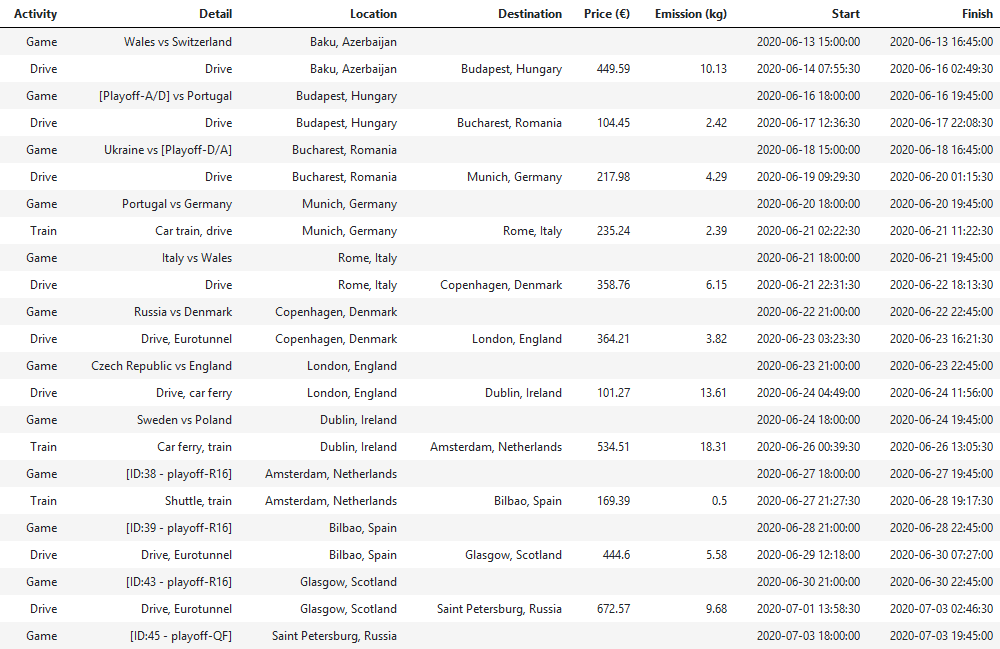Environmental concerns
One of the most criticized aspects of the host decision is the potential carbon dioxide or equivalent gas (CO2e) emission. Organizers announced that they are planting 600,000 trees to offset the potential impact. Using the UK's emission data, we can actually try to minimize our emissions for individual trips. We used the following emission values from the report:
- 180.78 g/km per passenger for flights.
- 112.86 g/km per passenger for ferry travel.
- 27.79 g/km per passenger for bus travel.
- 170.61 g/km per passenger for driving alone or 85.3 g/km per passenger for two people driving together (medium-size diesel car).
- 5.96 g/km per passenger by train.
Greenest trip
By integrating CO2e emissions into our optimisation model and changing the objective function, we get the best trip as shown above.
Here, brown arcs represent trains, blue arcs represent flights and green arcs represent road trips. We end up using only one flight and one road trip and use trains for the rest of the trip. The total emissions for this trip are only 592 kg compared to the fastest path's emissions of 3,159 kg and the least expensive of 1,720 kg! Just by focusing on the environmental impact, we managed to reduce our emissions quite significantly.
Greenest trip details
In this plan, we only use a single flight between our step between St. Petersburg and Glasgow. This step includes a train ride to Helsinki, a flight from there to Edinburgh and finally using a bus to Glasgow. Our only road trip is between Bucharest and Baku, which takes almost 38 hours. Besides these two, emissions for each step in our trip are less than 30 kg.
Electric cars
Instead of using a diesel car, we can further decrease our emissions by using an electric car (with battery, not a hybrid). In this case, our emissions per kilometre per person are 2.88 gram per kilometre per person. Assuming we have access to electric car chargers everywhere on our route, the best trip, in this case, is as above.
In this case, we use a combination of driving and train journeys. Our total emissions dropped from 592 kg to only 76 kg.



